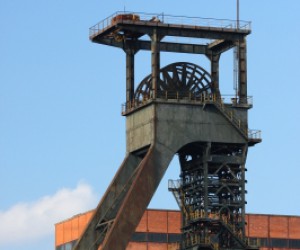The Watergberg region holds 4.6 billion tonnes of coal resources and depending on market trends and logistics, a quarter of the resource could be mined using opencast mining and the remainder using the underground mining method.
Strategic importance
Johannesburg-listed, black-controlled coal mining company, Exxaro Resources, already has the impressive Grootegeluk coal mine operating and is supplying coal to Matimba – an archetypal coal-fired power plant.
Once the Medupi Power Station is ramped up to full capacity, the mine will be a key stock supplier to South Africa’s first new power project in 20 years.
Speaking to the media in 2008, Exxaro chief executive officer Sipho Nkosi pointed out the importance of the resource, saying that the coal resources of the Waterberg coalfield are so abundant that they could host eight large new power stations.
To put the importance of the region into more perspective, Mxolisi Mgojo, executive general manager of the Exxaro coal division, believes Eskom may have to source “in excess” of 30 million tonnes of coal annually by rail from the Waterberg coalfield within 15 to 20 years to keep its Mpumalanga power stations going.
This would mean the Waterberg coalfield would be a key supplier to at least two power projects in the North West, a number of projects in Mpumalanga, in addition to sporadic supply to power projects in neighbouring Botswana, Zimbabwe and Mozambique.
Challenging resource
XMP Consulting’s senior coal analyst Xavier Prevost says the value of the Waterberg coalfield to the country is immense, but challenges exist: “It has a relative importance, as it contains large resources, but its mineability is difficult. Furthermore, the lack of water and infrastructure in the region makes it almost impossible to mine coal there.”
He adds that the biggest challenges facing the region include water availability, rail and its distance from the South African industrial hub.
The transport problem is of particular concern. The Waterberg mines compete with the Mpumalanga coalfields for key supply contracts to Eskom. In order to mitigate this, mining companies operating in the Waterberg coalfield hope to export much of their product to Asia, particularly China and India.
South Africa is home to the Richards Bay Coal Terminal (RBCT), the world’s largest coal export terminal. Currently, RBCT has the capacity to export 91 million tonnes of coal per year, while Transnet currently has the capacity to transport only 75 million tonnes per year. This has wreaked havoc on mining companies, which have had to look elsewhere for a solution to the problem.
Because of Transnet’s coal supply problems, mining companies have come together to meet with the governments of Botswana and Namibia, which have agreed in principle to develop the Trans-Kalahari Corridor to transport coal from Botswana and the Waterberg coalfield through Botswana and Namibia to Walvis Bay, from where it will be exported to Asia.
Junior miner, Continental Coal, has been included in a consortium that has been short-listed to develop the project, which may come on line only in 2020 (or when the Botswana government decides to grant the contract to build the line).
Skills development factor
Professor Fred Cawood from the Wits School of Mining Engineering says South Africa still faces a significant skills shortage in the coal industry and, while the current demand for skilled engineers is likely to be met in the next few years, not enough is being done to meet the demand for skilled technicians and artisans. The resources available at the Waterberg coalfield present companies with a perfect opportunity to address the current skills shortage.
This is mainly looking at the job creation potential of mining the Waterberg region. There is still potential for job creation if the government gets serious about creating a better environment.
The South African mining industry is dominated by the extractive process, with very little value add in the form of beneficiation. The Department of Mineral Resources (DMR) is under pressure to resolve this.
The government’s role
The five value chains identified by the DMR are manganese, iron ore and steel, energy autocatalytic converters, titanium and the jewellery value chain.
South Africa’s energy needs are satisfied by fossil fuel-generated power. Eskom is now under pressure to ensure a steady supply of electricity to industry; it appears that not long from now, the government could have a change of heart.
The government will have a serious look at the coal industry and increase its focus to allow the development in the sector to see to a portion of Eskom’s challenges. In addition, South Africa is a key coal supplier to neighbouring countries as well as a key exporter of coal to Europe and Asia.
Even if the coal industry plays a vital role in the South African economy, challenges such as transport, skills development and beneficiation plague the sector. Mining companies are doing their best to resolve these issues but, as Prevost points out, mining companies cannot overcome these challenges alone – the government must play a bigger role. The development of the Waterberg coalfield will play a key part in the improvement of this sector.










